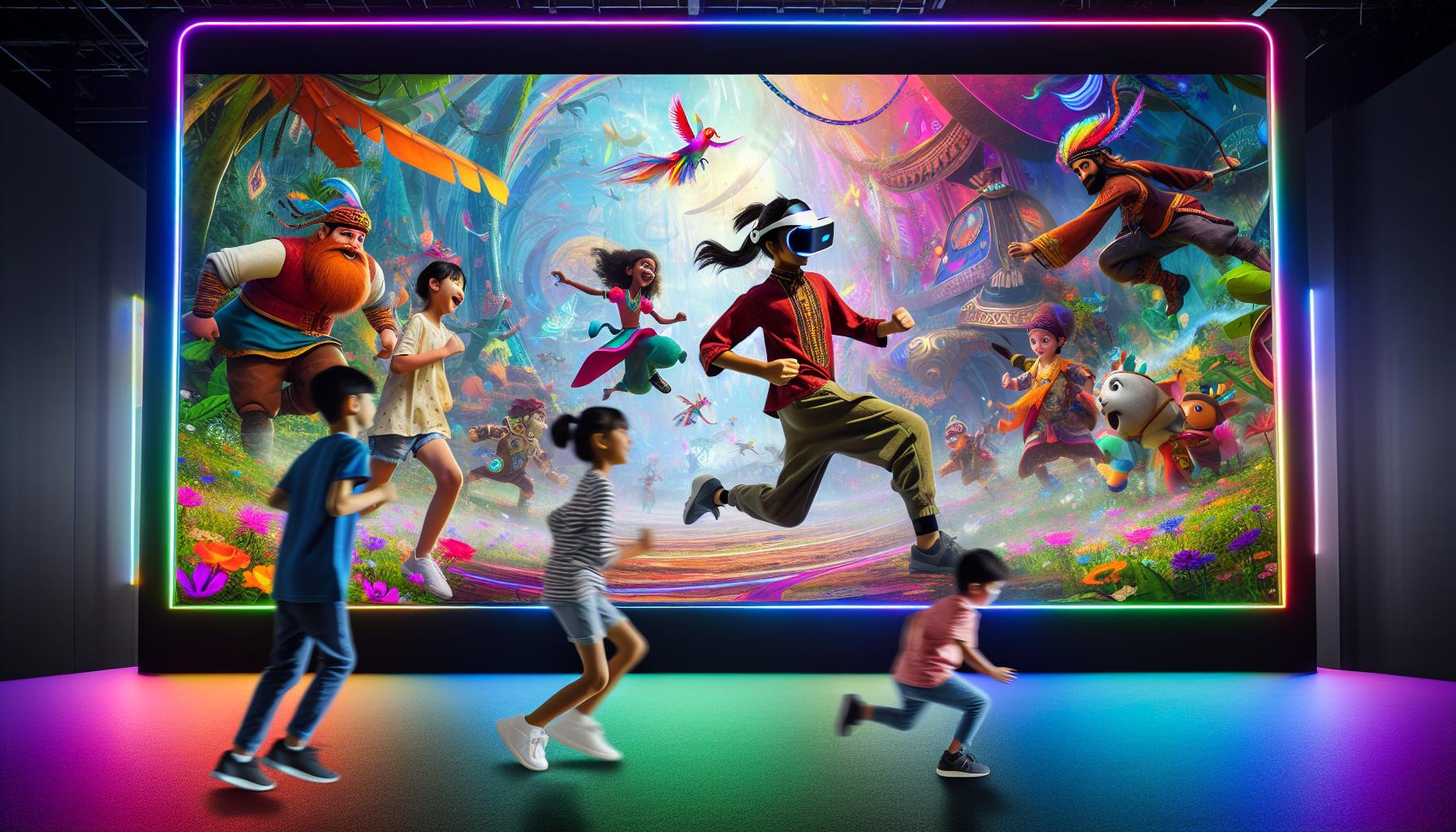Narrative Elements in VR Exercise Games Increase Intensity of Physical Activity, Reveals Study
A recent study published in the journal Virtual Reality has uncovered the potential of incorporating narrative elements into virtual reality (VR) exercise games to enhance physical activity. The findings suggest that while the narrative elements did not extend the duration of gameplay, they did result in a higher quality of physical activity, with participants engaging in more vigorous movements during gameplay. This research offers a new strategy to encourage exercise among young adults, who are increasingly adopting sedentary lifestyles.
The motivation behind this innovative study was a growing concern regarding the high prevalence of sedentary lifestyles among U.S. adults and the associated risk of diseases. With the rise of VR technology, researchers saw an opportunity to make exercise more appealing by integrating it into VR gaming, a popular form of entertainment among young adults. This interest was further fueled during the COVID-19 pandemic, which witnessed a decline in physical activity levels due to restrictions on access to traditional exercise facilities. Thus, the researchers aimed to explore the potential of narrative-driven VR games as an alternative means to combat sedentary lifestyles, particularly during times when physical activity may be limited.
To conduct the study, participants were recruited through web advertisements and posters on a university campus, with a focus on individuals aged 18-29 who reported low levels of physical activity. Out of the 252 students who expressed interest, 36 met the criteria and completed the study. The participants played both active and sedentary VR games using a HTC Vive Pro headset, under conditions with and without added narrative elements. They were randomly assigned to either a narrative or non-narrative condition and engaged in both an active VR game, Beat Saber, and a sedentary VR game, Thumper. Beat Saber required physical movement, while Thumper involved minimal physical activity. Participants in the narrative condition were shown a five-minute video introducing a storyline related to the game they were about to play. The researchers used wrist-worn accelerometers to measure the participants' physical activity levels and gathered additional data on their game experience through questionnaires.
Although the inclusion of a story element did not significantly prolong the duration of gameplay, participants in the narrative condition engaged in a higher percentage of moderate-to-vigorous physical activity compared to those in the non-narrative condition. This suggests that narratives have the potential to motivate players to exert more effort during gameplay. Additionally, the study found that active VR games promoted significantly more physical activity than sedentary VR games, highlighting their effectiveness in increasing physical activity levels. Moreover, active VR games, especially those with narrative elements, provided a more positive game experience, as indicated by higher scores in flow, positive affect, and physical activity enjoyment, compared to sedentary VR games. This suggests that incorporating stories into VR games can not only promote physical activity but also enhance the overall enjoyment of the exercise.
However, the study faced certain limitations, including challenges associated with the COVID-19 pandemic, such as physical distancing measures, which may have influenced participants' willingness to fully engage in physical activity. Furthermore, the narrative videos were not professionally produced, potentially limiting their immersive impact. Future research should aim to eliminate such significant modality shifts to preserve the immersive experience. The study highlights the need for further investigation into more immersive and interactive narrative designs, and exploring different narrative themes and delivery methods to maximize player engagement and physical activity. By continuing to explore the intersection of VR technology, storytelling, and exercise, researchers strive to discover new strategies for combating sedentary lifestyles and promoting physical health.
The study titled "The effect of narrative element incorporation on physical activity and game experience in active and sedentary virtual reality games" was authored by Amy Shirong Lu, Victoria Pelarski, Dar Alon, Aleksandra Baran, Emma McGarrity, Neha Swaminathan, and Caio Victor Sousa.
Analyst comment
Positive news: The study found that adding narrative elements to VR exercise games can enhance the quality of physical activity and make it more engaging for young adults. This could help combat sedentary lifestyles and promote exercise, especially during times of limited access to traditional exercise facilities. The researchers suggest further exploration of immersive and interactive narrative designs to maximize player engagement and physical activity. Market prediction: The demand for narrative-driven VR exercise games is likely to increase as they offer a more enjoyable and motivating exercise experience.













